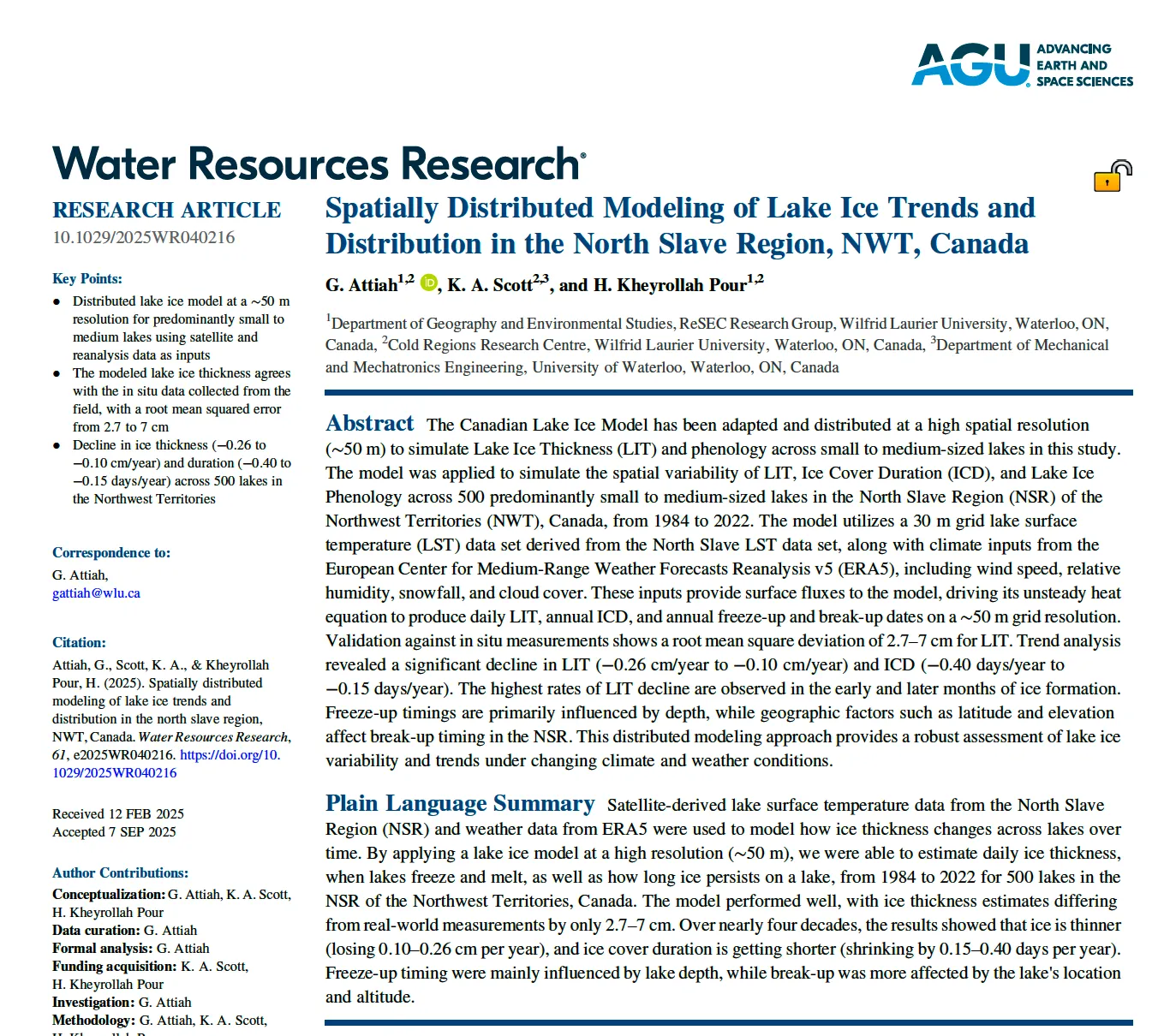Our New Study Reveals that Climate Change Thins Ice Across Northern Canadian Lakes
A new study published in Water Resources Research reveals that lake ice in Northern Canada’s North Slave Region is shrinking significantly in both thickness and duration, raising concerns for ecosystems, infrastructure, and communities that depend on frozen lakes for winter travel and transport.
ReSEC Team member, Dr. Attiah, used an advanced spatially distributed model, CLIMoGrid, to simulate ice thickness and phenology across 500 lakes from 1984 to 2022. Key findings show that lake ice thickness (LIT) has declined, while the duration of ice cover (ICD) has shortened annually. These trends were especially pronounced during early freeze-up and late break-up periods. Deeper lakes tended to freeze later and exhibit more rapid thinning, while northern and higher-elevation lakes maintained ice longer.
This study provides essential insights for understanding the regional impacts of climate change and for future planning in cold-region communities. With 65% of lakes showing significantly reduced ice thickness and 63% demonstrating shortened ice seasons, the study underscores the urgency of monitoring and adapting to rapid environmental changes in Canada’s northern regions.
Read the full article here
